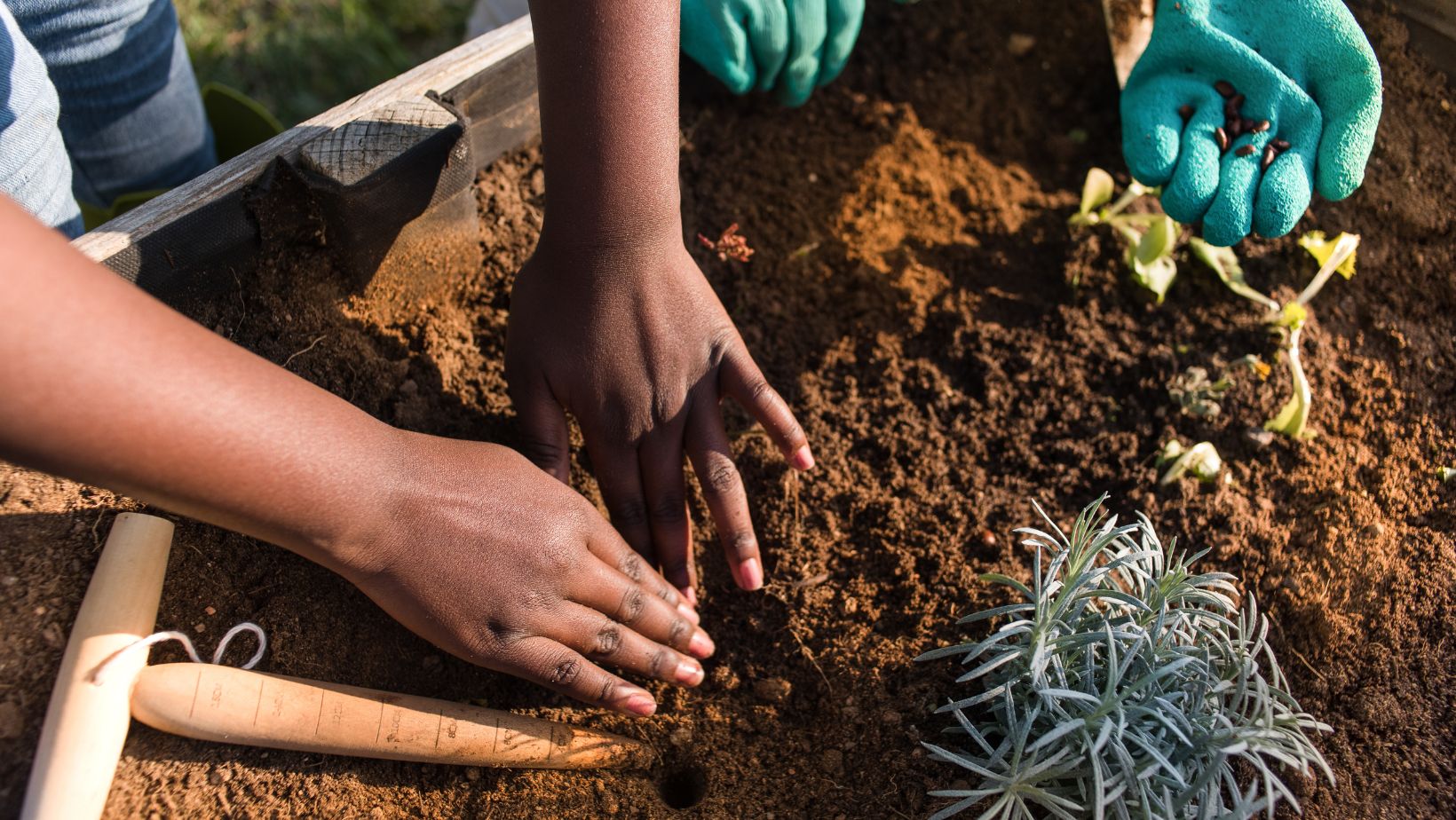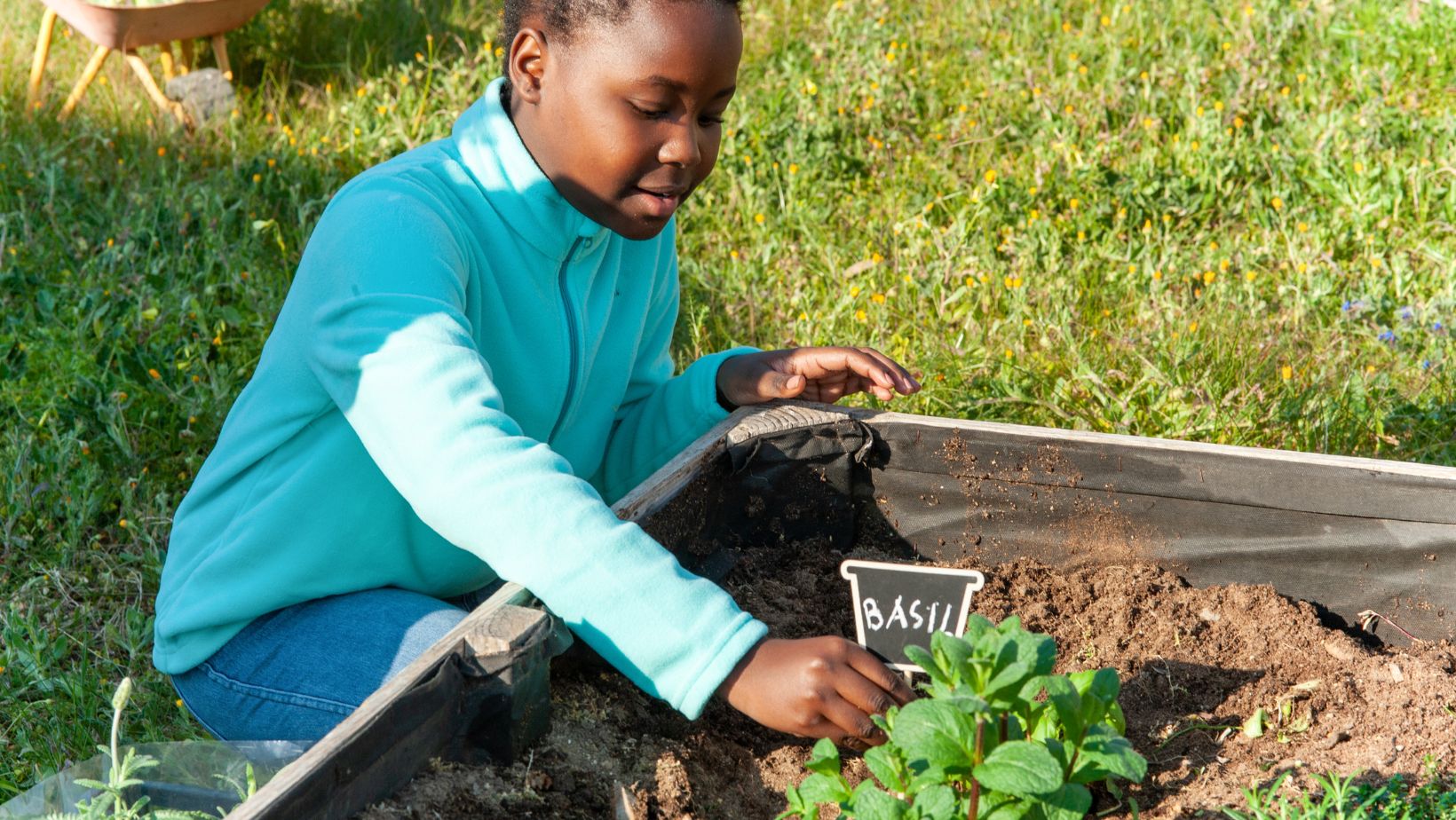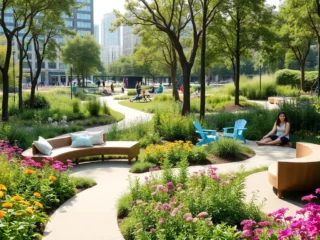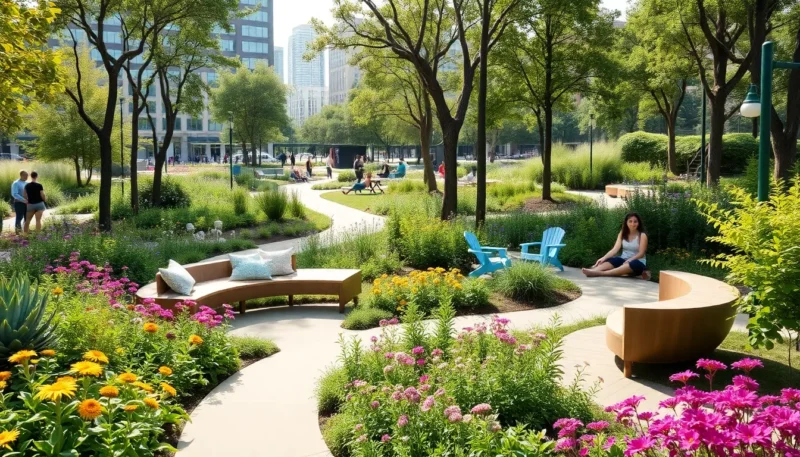
As we move into 2025, homeowners’ garden approaches are significantly transforming. Sustainable landscaping has shifted from a niche interest to a mainstream movement, reflecting a collective desire to create spaces that are beautiful and beneficial to the planet.
Homeowners increasingly seek methods to cultivate eco-friendly gardens, prioritizing choices that conserve resources and support local ecosystems. The Royal Horticultural Society (RHS) notes a continued rise in gardeners focusing on environmentally friendly spaces that enhance biodiversity, indicating a strong public commitment to greener living practices.
This evolution in garden design embraces various practices, from intelligent water management systems to carefully selecting native flora. Innovations such as permeable paving materials are gaining popularity due to their ability to reduce surface water runoff and mitigate local flooding risks during heavy rainfall. Simultaneously, vertical gardening offers ingenious solutions for incorporating greenery into compact urban environments, proving that sustainability can thrive even with limited space.
This year is marked by a noticeable surge in tools, technologies, and design philosophies aimed at managing garden resources more efficiently, enhancing home aesthetics while contributing positively to ecological health, and aligning with global sustainability goals. For instance, adopting drought-tolerant plants and rain gardens stands out as a top sustainable practice, effectively reducing water usage.
Embracing Water-Wise Gardening Techniques
Water conservation has become a cornerstone of sustainable landscaping in 2025, spurred by increasing concerns over water scarcity and the impact of excessive water use in gardens. Homeowners are actively looking to reduce their water footprint without compromising the beauty and vitality of their outdoor spaces.
Implementing water-wise strategies is not just an ecological choice but also a practical one, often leading to reduced utility bills and less maintenance. Gardeners are becoming particularly mindful of practices like being ‘water wise’ to prevent flash flooding. This focus reflects a broader understanding that responsible water use is critical for long-term garden health and environmental stewardship, especially in drought-prone regions.
Drought-Tolerant Plants and Xeriscaping
One of the most impactful trends is the move towards selecting drought-tolerant plants and embracing xeriscaping principles, which emphasize water conservation through creative landscape design. Native plants, adapted to local climate conditions, typically require significantly less water than non-native species once established, making them ideal choices for sustainable gardens. This approach conserves precious water resources and reduces the need for fertilizers and pesticides, further minimizing the garden’s environmental impact.
The adoption of native plants surged in 2025, valued for lowering maintenance needs and promoting biodiversity. Choosing species suited to the local environment creates resilient landscapes that thrive naturally, supporting local wildlife and contributing to a healthier ecosystem with less human intervention.
Smart Irrigation and Rainwater Harvesting
Technological advancements are crucial in optimizing garden water usage. Smart irrigation systems have sensors that monitor soil moisture levels, adapt to real-time weather conditions, prevent overwatering, and ensure that plants receive hydration precisely when needed.
These systems significantly advance traditional timers, potentially saving substantial water annually. Also, using permeable paving materials helps rainwater infiltrate the ground rather than running off into storm drains, replenishing groundwater and reducing pollution. Smart irrigation systems with weather-adaptive features emerged as a must-have in 2025, optimizing water delivery effectively.
Promoting Biodiversity in Your Backyard
Beyond conserving resources, sustainable landscaping in 2025 strongly emphasizes actively supporting and enhancing local biodiversity. Gardens are increasingly viewed not just as personal retreats but as vital habitats that can contribute to the health of the wider ecosystem. Homeowners are creating spaces that welcome pollinators like butterflies, birds, and bees, recognizing their role in a balanced environment.
The FAO estimates that 40% of global crop production is lost yearly due to plant pests and diseases. This underscores the importance of biodiversity for natural pest control and ecosystem resilience. This involves thoughtful plant selection, providing food sources and shelter, and avoiding harmful chemicals.
Native Planting for Local Wildlife
The deliberate choice of native plants is fundamental to creating a garden that genuinely supports local wildlife. Native flora has co-evolved with local insects, birds, and animals, providing essential food sources like nectar, pollen, seeds, and foliage, as well as nesting materials and shelter.
Planting native species helps restore local ecological connections that may have been disrupted by development or the introduction of non-native plants. Native plant adoption is a key 2025 trend precisely because it supports biodiversity while reducing maintenance and water needs. By cultivating native species, gardeners contribute directly to the survival and proliferation of local wildlife populations, turning their backyards into valuable ecological assets that foster regional biodiversity.
Creating Edible Landscapes
Another flourishing trend is the integration of edible plants into ornamental garden designs, creating landscapes that are both beautiful and productive. Growing edible shrubs, perennial vegetables, herbs, and fruit trees aligns perfectly with sustainable principles by reducing food miles and providing fresh, seasonal produce right at home.
The RHS predicts that edible landscapes will remain popular, serving as food sources for homeowners and habitats for wildlife. Companion planting techniques, such as growing specific plants together to benefit each other, are also gaining traction. For instance, gardening experts suggest planting pineberries alongside strawberries, as cross-pollination can significantly increase fruit yield for both. Edible landscaping connects homeowners more closely to their food sources and the natural growth cycles.
Sustainable Materials and Design Innovations
The shift towards sustainability extends to the very materials used in garden construction and decor. In 2025, there’s a marked preference for eco-friendly materials with minimal environmental impact from sourcing to disposal. Designers and homeowners opt for recycled content, sustainably harvested resources, and durable materials that reduce the need for frequent replacement.
The American Society of Landscape Architects (ASLA) updated its Climate Action Plan, aiming for zero emissions and increased carbon sequestration through thoughtful design and material choices. This focus reflects an industry-wide commitment to ensuring that the hardscaping elements of a garden align with its green, living components.
Recycled and Natural Materials
Using recycled materials like reclaimed wood, recycled plastic lumber, and crushed recycled concrete or glass is becoming increasingly common for paths, patios, fences, and garden furniture. These choices help divert waste from landfills and reduce the demand for virgin resources.
Alongside recycled options, there’s a strong trend towards natural materials chosen for their aesthetic appeal and lower environmental footprint. Sustainably harvested wood, natural stone, and materials like bamboo are favored for creating structures with an organic feel.
Recreation trends for 2025 highlight pre- and post-consumer recycled materials and sustainably harvested wood, emphasizing durability and reduced maintenance. Tile trends also lean towards nature-inspired designs using materials like clay and terracotta, reinforcing the desire for natural textures and warm tones in outdoor living spaces.
Vertical Gardens and Small Space Solutions
Addressing the challenge of limited space, especially in urban areas, vertical gardens, and innovative small-space solutions continue to rise in popularity. Vertical gardening allows homeowners to grow plants upwards on walls or trellises, maximizing greenery without demanding a large footprint. This technique is ideal for balconies, patios, or small yards, adding insulation, improving air quality, and creating stunning visual features.
Reusing materials to create raised beds or vertical planters is a specific trend in urban settings. Compact plant varieties, such as bush-type vegetables like the Patty Pan squash, are also favored for containers and raised beds, enabling productive gardening even in confined areas. These solutions demonstrate that sustainable gardening is accessible regardless of space constraints.
Integrating Pest Management with Eco-Conscious Practices
Maintaining a thriving, sustainable garden involves more than just plant selection and water conservation; it also requires a thoughtful approach to pest management. The goal is to create an ecosystem where pests are managed naturally, minimizing the need for interventions that could harm beneficial insects, wildlife, or the environment.
An eco-conscious garden prioritizes preventative measures, such as promoting plant health, encouraging natural predators, and using physical barriers. However, pests like rodents can sometimes become problematic, particularly near compost areas or where edible plants offer an attractive food source.
Finding solutions that align with sustainable principles is crucial. Climate-resilient designs incorporating hardy plants are becoming essential partly because healthy plants are naturally more resistant to pests and diseases.
Achieving a harmonious balance in a garden ecosystem occasionally requires targeted intervention, especially when dealing with persistent issues like rodent infestations that can undermine garden health and pose risks to human well-being. Selecting a pest control method that aligns with environmental values is paramount in these situations.
Companies specializing in eco-friendly approaches offer solutions that minimize ecological disruption. For instance, Aptive Environmental provides services focusing on responsible pest management techniques. Their experts utilize strategically placed snap traps with specific baits, prioritizing the safety of non-target species, pets, and children.
This tailored strategy ensures that pest issues are addressed effectively while upholding the principles of sustainability that homeowners strive for in their gardens. Professional pest control Las Vegas services can offer solutions designed to integrate seamlessly with an overall eco-conscious landscaping plan for specific challenges like persistent mice or rats attracted to garden resources.
By taking a customized approach, Aptive addresses homeowner concerns and protects the property inside and out, ensuring peace of mind while supporting the garden’s ecological balance. This method contrasts sharply with indiscriminate chemical applications, offering a more targeted and environmentally considerate way to manage pests within a sustainable framework.
The Future Outlook: Technology and Community
The future of sustainable landscaping looks bright, increasingly supported by technological advancements and a strong sense of community among gardeners. Innovations continue to emerge, offering smarter ways to manage resources and monitor garden health. For example, AI-powered drones with specialized cameras show promise for early plant disease detection on a larger scale, potentially preventing significant crop losses and reducing the need for widespread treatments.
The development of more efficient battery-powered garden tools also contributes by reducing emissions and noise pollution compared to traditional gasoline models. This technological integration promises greater precision and efficiency in maintaining eco-friendly gardens.
Beyond technology, the community aspect is vital in advancing sustainable practices. Workshops, online forums, and local gardening groups provide platforms for sharing knowledge, exchanging tips, and celebrating successes in eco-friendly gardening. This collaborative spirit fosters innovation and encourages more people to adopt sustainable methods.
Furthermore, the shift towards sustainable landscaping contributes to broader economic benefits, including the creation of green jobs in design, installation, and maintenance. Initiatives like the ASLA Climate Action Plan, which aims for significant financial benefits through ecosystem services and green employment, highlight this collective effort, underscoring the growing movement towards greener, more resilient outdoor spaces.
Beauty and Sustainability Rules
The sustainable landscaping trends transforming home gardens in 2025 reflect a profound shift towards environmental consciousness and ecological responsibility. From adopting water-wise techniques and native plants to embracing biodiversity, utilizing sustainable materials, and integrating responsible pest management, homeowners are actively shaping outdoor spaces that are both aesthetically pleasing and planet-friendly.
Supported by technological innovation and a vibrant community spirit, these practices enhance the beauty and function of individual gardens and contribute significantly to broader environmental goals. As these trends take root, they empower homeowners to become active stewards of their local ecosystems, cultivating gardens that nurture nature and offer lasting enjoyment.














